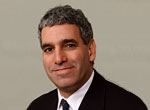
Recent AdditionDesigner Skin LLC v. S & L Vitamins, Inc., et al. |
Internet Laws and StatutesNew York Section 156.00 Offenses involving computers; definition of terms. S 156.00 1. "Computer" means a device or group of devices which, by manipulation of electronic, magnetic, optical or electrochemical impulses, pursuant to a computer program, can automatically perform arithmetic, logical, storage or retrieval operations with or on computer data, and includes any connected or directly related device, equipment or facility which enables such computer to store, retrieve or communicate to or from a person, another computer or another device the results of computer operations, computer programs or computer data. 2. "Computer program" is property and means an ordered set of data representing coded instructions or statements that, when executed by computer, cause the computer to process data or direct the computer to perform one or more computer operations or both and may be in any form, including magnetic storage media, punched cards, or stored internally in the memory of the computer. 3. "Computer data" is property and means a representation of information, knowledge, facts, concepts or instructions which are being processed, or have been processed in a computer and may be in any form, including magnetic storage media, punched cards, or stored internally in the memory of the computer. 4. "Computer service" means any and all services provided by or through the facilities of any computer communication system allowing the input, output, examination, or transfer, of computer data or computer programs from one computer to another. 5. "Computer material" is property and means any computer data or computer program which: (a) contains records of the medical history or medical treatment of an identified or readily identifiable individual or individuals. This term shall not apply to the gaining access to or duplication solely of the medical history or medical treatment records of a person by that person or by another specifically authorized by the person whose records are gained access to or duplicated; or (b) contains records maintained by the state or any political subdivision thereof or any governmental instrumentality within the state which contains any information concerning a person, as defined in subdivision seven of section 10.00 of this chapter, which because of name, number, symbol, mark or other identifier, can be used to identify the person and which is otherwise prohibited by law from being disclosed. This term shall not apply to the gaining access to or duplication solely of records of a person by that person or by another specifically authorized by the person whose records are gained access to or duplicated; or (c) is not and is not intended to be available to anyone other than the person or persons rightfully in possession thereof or selected persons having access thereto with his or their consent and which accords or may accord such rightful possessors an advantage over competitors or other persons who do not have knowledge or the benefit thereof. 6. "Uses a computer or computer service without authorization" means the use of a computer or computer service without the permission of, or in excess of the permission of, the owner or lessor or someone licensed or privileged by the owner or lessor after notice to that effect to the user of the computer or computer service has been given by: (a) giving actual notice in writing or orally to the user; or (b) prominently posting written notice adjacent to the computer being utilized by the user; or (c) a notice that is displayed on, printed out on or announced by the computer being utilized by the user. Proof that the computer is programmed to automatically display, print or announce such notice or a notice prohibiting copying, reproduction or duplication shall be presumptive evidence that such notice was displayed, printed or announced. 7. "Felony" as used in this article means any felony defined in the laws of this state or any offense defined in the laws of any other jurisdiction for which a sentence to a term of imprisonment in excess of one year is authorized in this state. S 156.05 Unauthorized use of a computer is a class A misdemeanor. S 156.10 1. he does so with an intent to commit or attempt to commit or further the commission of any felony; or 2. he thereby knowingly gains access to computer material. Computer trespass is a class E felony. HISTORY: Add, L 1986, ch 514, § 1, eff Nov 1, 1986. Computer tampering in the fourth degree is a class A misdemeanor. S 156.25 1. he does so with an intent to commit or attempt to commit or further the commission of any felony; or 2. he has been previously convicted of any crime under this article or subdivision eleven of section 165.15 of this chapter; or 3. he intentionally alters in any manner or destroys computer material; or 4. he intentionally alters in any manner or destroys computer data or a computer program so as to cause damages in an aggregate amount exceed- ing one thousand dollars. S 156.26 Computer tampering in the second degree is a class D felony.
S 156.30 2. any computer data or computer program with an intent to commit or attempt to commit or further the commission of any felony. Unlawful duplication of computer related material is a class E felony. S 156.35 S 156.50 2. under section 156.20, 156.25, 156.26 or 156.27 of this article it shall be a defense that the defendant had reasonable grounds to believe that he had the right to alter in any manner or destroy the computer data or the computer program; 3. under section 156.30 of this article it shall be a defense that the defendant had reasonable grounds to believe that he had the right to copy, reproduce or duplicate in any manner the computer data or the computer program. |


